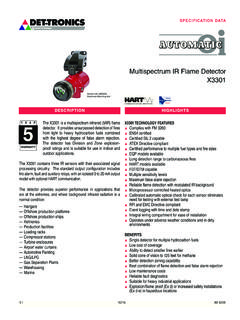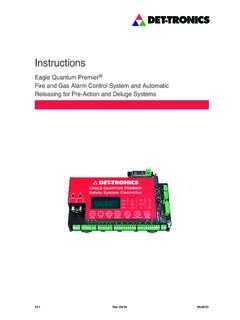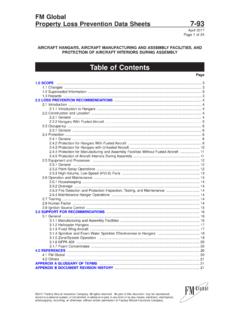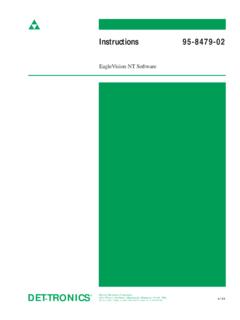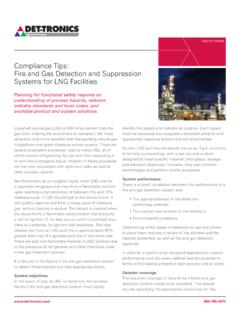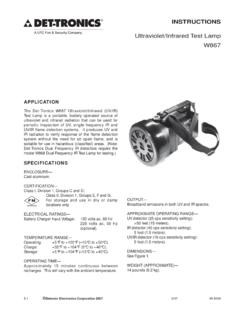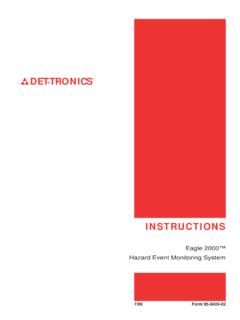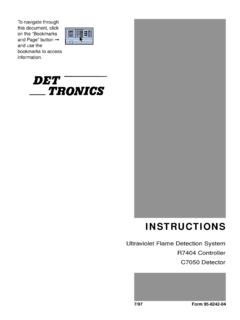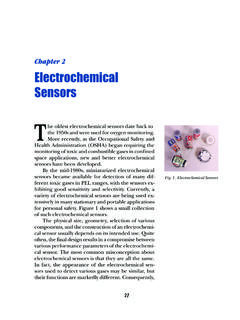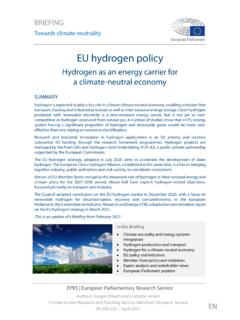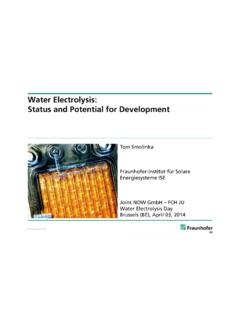Transcription of Meeting NFPA standards for flame, smoke and gas …
1 Meeting nfpa standards for flame , smoke and gas detectionFire is one of the most critical hazards in any built environment, and industrial processes and facilities that involve volatile and potentially flammable materials present special challenges for fire conditions can occur in a range of industrial settings from oil platforms and refineries to chemical processing plants, as well as in specific applications as varied as paint lines, LNG terminals and turbine enclosures. These types of high-risk locations and operations call for process-specific fire protection.
2 This article, by Mike Hosch, Simon Pate and Mark Indgjer of Det-Tronics, looks at the separate types of fire protection equipment for use in hazardous areas and the leading standards for each. The requirements for fire protection are legislated and subject to numerous codes and standards , such as EN (European Norms) 54 and ISO (International Organization for Standardization) 7240. In the , the leading resource for fire safety standards is the nfpa (National Fire Protection Association), including nfpa 72: National Fire Alarm and Signaling Code and nfpa 70: National Electrical Code (NEC ).
3 While some codes apply to residential and commercial settings (where smoke and heat detection are commonly adequate), hazardous-area fire and gas detection equipment must be certified for use in that hazardous location. This requirement is spelled out in the by OSHA (Occupational Safety and Health Administration) 1910 Subpart discussing hazardous-area fire protection standards , it s important to understand what attributes make a process or location hazardous. Defining hazardous areas The definition of hazardous locations is based on a number of factors.
4 The National Fire Protection Association in the covers these topics in great detail. According to its website, nfpa has published more than 300 codes and standards that affect virtually every building, process, service, design and installation with the goal of minimizing the risk and effects of fire. In particular, nfpa 70, Chapter 5 addresses special occupancies. Within that chapter, Article 500 Hazardous (Classified) Locations, Classes I, II and III, Divisions 1 and 2 stipulates that locations be classified based on the flammables that could be present, and their concentration or quantity.
5 Hazardous areas are broken down into these three classes: Class I areas in which flammable gases, flammable liquid-produced vapors, or combustible liquid-produced vapors are or may be present in the air in quantities sufficient to produce explosive or ignitable mixtures Class II locations in which combustible dust is present; dust is defined as solid material less than 420 microns ( in.) or smaller in diameter Class III locations in which easily ignitable fibers or flyings, such as rayon, cotton, jute, hemp and cocoa fiber are presentWithin each class, there are divisions based on the concentration of flammable materials, the form of handling and the frequency with which the materials maybe present.
6 For example, in Class I: Division 1 is a location where combustible materials are routinely present in ignitable safety25 Division 2 is one in which the same materials are handled, processed, or used, but in which the materials are normally confined and can escape only in case of accident or breakdown or failure of ventilation Class I, locations are also defined by zones (0, 1 or 2) per Article 505 of nfpa 70. For example, in a Class I, Zone 0 location, ignitable concentrations of flammable gases or vapors are present continuously or for long periods of time.
7 How to control fire risk in hazardous areas In order to control fire risk, it s important to understand the components needed for a fire to start. Commonly referred to as the fire triangle, the essential elements are: 1. Oxygen which can be a constituent or outcome of various industrial processes, though its primary source is the ambient air2. Fuel which is present in structures and used in processes of all kinds, but is of greater concern in locations defined as hazardous3. Ignition source ( , heat) which, depending on the fuel and conditions, can be as minimal as the spark of an electric switch or electric motor, or a hot surfaceTo control the risk of fire, one of the elements of the fire triangle must be eliminated.
8 When possible, flammable materials must be contained and kept away from oxygen, as well as ignition sources such as sparks or hot surfaces. The primary goal should be containment of the fuel source, , preventing leakage. The next step is to eliminate or minimize the risk of ignition. Because oxygen is ever-present in the atmosphere, it is difficult to eliminate this element from the fire triangle. Success in containing or reducing the concentration of fuel determines the Division level of a hazardous area. Any hazardous area, by definition, has some degree of risk due to the presence of flammable materials at combustible ignition risk from equipmentMany industrial locations in which hazardous materials may be present are also areas where electronic and electrical equipment could provide sources of ignition.
9 It is therefore necessary to control ignition sources, , heat, arcing or sparking. If electrical equipment (including flame and gas detectors) must be located in a hazardous area, per nfpa they must be designed to limit or isolate potential sources of ignition. nfpa 70 Section Protection Techniques lists several techniques for protecting electrical and electronic equipment used in hazardous (classified) locations. The three acceptable protection methods for Class I Division 1 are: Explosion Proof (XP) sparks or explosions are contained within the housing Purged and Pressurized combustible gases and vapors are denied entry into the enclosure Intrinsically Safe (IS) the entire power of the system is limitedIn addition to limiting electrical energy as an ignition source, the surface temperature of electrical equipment must also be controlled.
10 Equipment is marked (T1 T6) to show the environment for which it has been evaluated and is considered suitableWhat makes up a fire protection systemA fire protection system is comprised of several subsystems that can include, but are not limited to: flame , smoke and gas detection; notification and/or suppression activation; and a controller that receives the inputs from the detection devices, makes decisions and initiates appropriate action or is no single solution for fire detection in hazardous areas. Effective protection is based on the materials and fuels present, the processes involved, the environment, and other control measures present.
